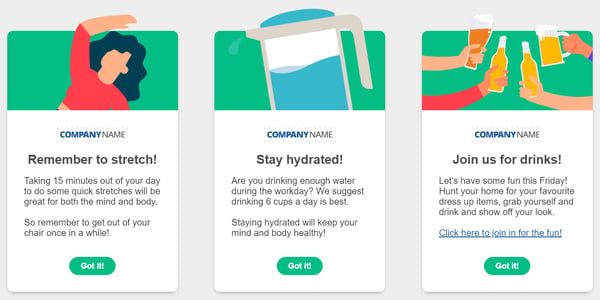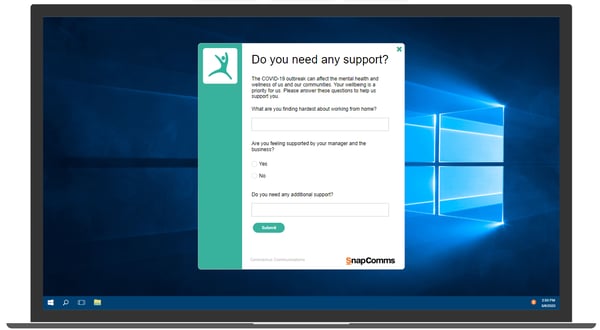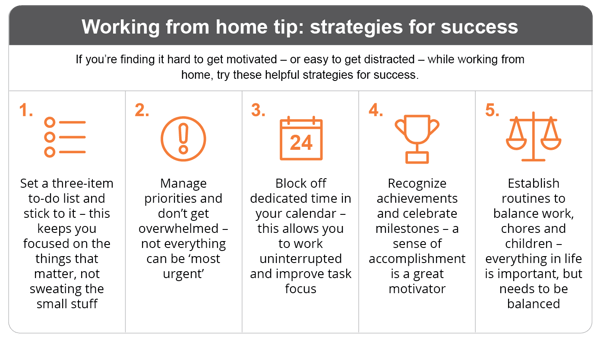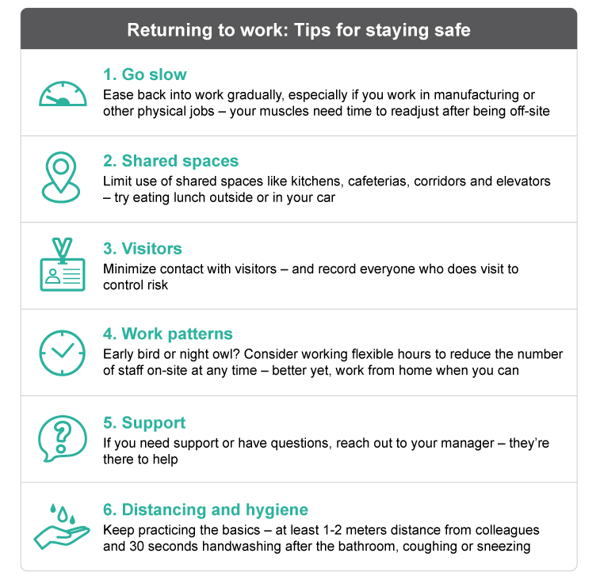
Employees have a lot on their minds right now.
They’re juggling workloads and virtual meetings, often while wrangling children at home. They’ve just adjusted to working remotely, when they’re confronted with the prospect of returning to the office.
It’s an uncertain and fast-evolving time. More than ever, employees rely on their employers to inform them, engage with them and support them.
But it can be hard for managers to know what support to offer, especially in the absence of regular face-to-face communication when staff are working from home.
These internal communication templates provide useful message ideas for managers to support staff during – and after – the COVID-19 crisis.
1. Providing support
One of the most powerful ways of demonstrating support for employees is to ask them what they need. This could be physical material (eg. an extra computer screen), reassurance of concerns (eg. what does the latest business change mean for me?) or help with home life (eg. flexible hours to manage childcare).
Many staff won’t feel comfortable starting this conversation with employers, so encourage managers to take the front foot and initiate this. Use a staff survey to reach out to all staff to ask them what they need, like the example below. Remember this isn’t a one and done exercise – you can never ask too often.
2. Encouraging success
Working from home can be a challenge. This work environment requires a completely different mindset than working in traditional offices, and the reality is that most employees are unaccustomed to it. Add partners, flatmates or children into the mix and maintaining focus can be difficult.
Help employees manage the minefield of remote working by arming them with tips to make the most of their situation. Download and share the strategies for success graphic below to offer staff some simple, useful advice for improving the employee experience, staying productive and avoiding cabin fever.
3. Promoting positive behaviors
In our haste to stay focused on completing this task or meeting that deadline, it’s easy to neglect things which are more important – including our own wellbeing. The normal routines we’ve established in the workplace are lost in the unfamiliar environment of working from home.
But the implications of neglecting these things can be significant in lowering employee engagement, increasing stress and impacting health. Daily reminders are an effective and non-threatening way to promote positive behaviors among staff. Send notification messages to staff through visual communication channels. Examples could include:
- Reminders to stretch
- Reminders to stay hydrated
- Invitations to virtual social events
- Birthday or anniversary celebrations
- Employee of the month awards
- Daily task reminders

Want to see how communication tools like these could help your organization?
Try them for yourself with a free 30-day trial of SnapComms.
4. Assessing sentiment
Do you know what’s top of mind for your employees at the moment? Is it when they can get back into the office, what changes there will be, where they can find up-to-date information, or something else entirely?
Research from the end of March revealed that 41% of employees were afraid to go to work because of the risk of exposure. With many businesses now planning a return to work, many staff may feel equally uncomfortable.
A staff sentiment survey on returning to work is an excellent way of getting employee feedback on how they feel – providing useful insights to inform company decision-making and demonstrating employer empathy.
Sample return to work survey:
Returning to the Office – Survey
1. How do you feel when working from home, compared to working in the office?
- More productive
- As productive
- Less productive
2. How often would you like to continue working from home?
- More often
- Less often
- All the time
- Not at all
3. How soon would you feel comfortable returning to the office?
- In the next few weeks
- In 1-2 months
- In 3-4 months
- In 5 months or more
5. Easing return to work transitions
For most employers, returning to work can’t come quickly enough to get their business back up and running. But many employees may not be quite so excited – they may still be worried about potential health risks, have childcare arrangements to make, or feel unsettled due to the changes the business has undergone since the lockdown started.
Supporting employees through this time is important if those employees are to stay settled, engaged and productive. There are a number of things employees can do to help ease this transition back to regular working life, which managers can communicate to their teams through a helpful tips graphic.
To keep your staff better informed and supported throughout lockdown and returning to work, you can access more message templates and download visual resources to use in your organization.
Or to get access to a range of dynamic, customizable message templates you can use immediately, including the examples shown above, try the SnapComms multi-channel communications platform for yourself with a free 30-day trial.






